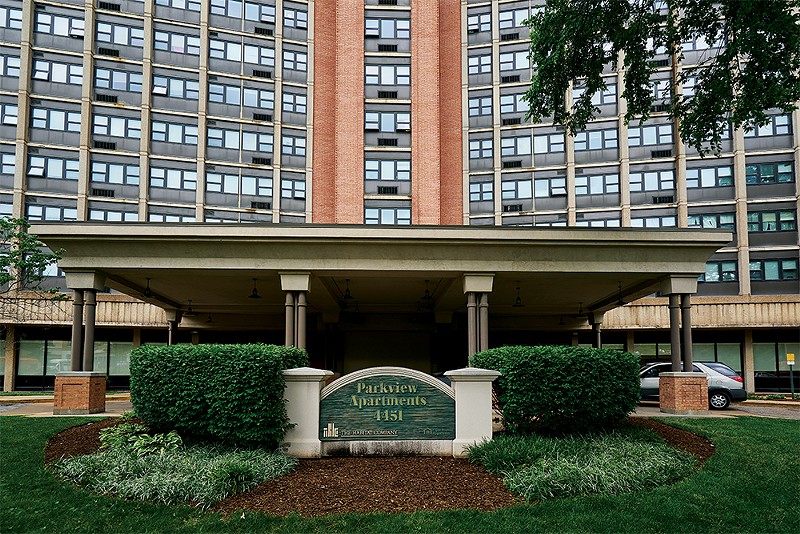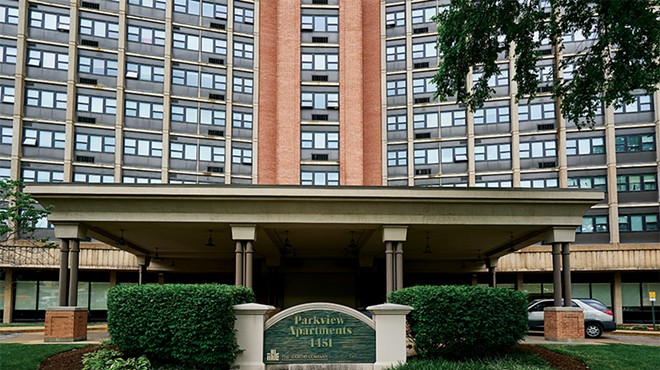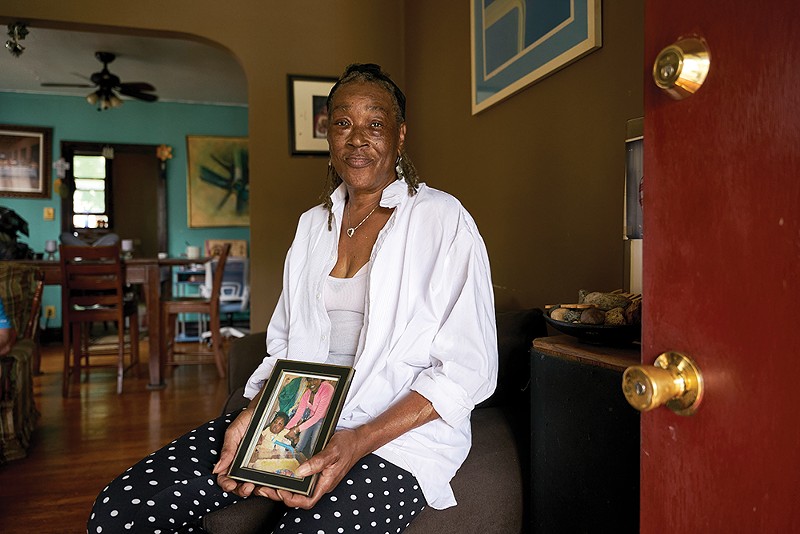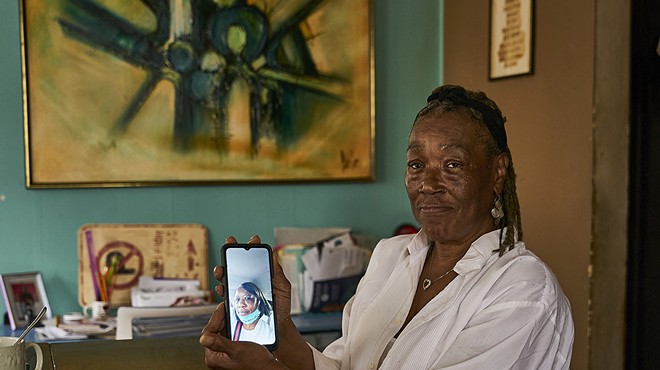
THEO WELLING
In February 2022, Parkview Apartments was the scene of the deadliest mass overdose in St. Louis history.
Nearly a full year has passed since the early February weekend when 11 people suffered accidental fentanyl overdoses after smoking crack cocaine laced with the deadly opioid at the Parkview and Park Place apartments on Forest Park Avenue.
Joseph Yancey recalls what went through his mind when he heard the first reports of fatalities — eight in all.
Yancey, 70, had just come out of retirement as CEO of a behavioral health care organization to head up a new group: Grassroots Reinvestment for Optimal Well-being – St. Louis, a.k.a. GROW - St. Louis. Its stated mission: use housing, treatment and harm reduction to fight the opioid overdose crisis killing increasing numbers of people in St. Louis, St. Louis County and across Missouri.
Yancey is part of a new approach to the opioid crisis being tried by in St. Louis. Spurred by the Parkview and Park Place deaths, and the infusion of the first pay-outs from Missouri’s $458 million share of the $26 billion National Opioid Settlement, the city and county are joining together with new programs to promote an all-of-government approach to the opioid crisis.
This time around, however, a bracing new awareness is informing the war on opioids. It’s the recognition that the vast majority of substance abuse stems from untreated trauma and mental health problems.
“The bottom line is people in pain will seek relief even if it kills them,” Yancey says. “Or even kill themselves if it means not to hurt again. The genesis is pain. The genesis is trauma.”
The new interventions are desperately needed. Deaths from overdoses of opioid drugs — which include many prescription painkillers, heroin and fentanyl, a drug 100 times more powerful than morphine — have risen dramatically among the region’s Black community; all eight of the men and women who died at Parkview and Park Place were Black.
Yancey, who is Black, admits he wasn’t shocked by the mass overdose tragedy — the worst in St. Louis history — nor by the media silence that followed the initial news reports of the fentanyl-poisoning deaths.
“No, it didn’t surprise me,” Yancey says. “The media, just like every other system, is not structured and developed with any thought of people of color in mind. You see it with everything.”
Before he took over the reins of GROW – St. Louis, Yancey says he told the Missouri Department of Mental Health — which is funding the new group — that the focus must be on mental health issues, such as childhood trauma and untreated bipolar disorder, that lead people to seek relief with street drugs in the first place.
“My point was if we’re going to do this, then it’s going to have to be very, very different,” he says. “Because everything that’s been done before has not made an impact.”
The truth of Yancey’s statement is underscored by the latest figures from the Missouri Department of Health and Senior Services.
The Show-Me State officially recorded 2,153 drug overdose deaths in 2021, a 15 percent increase from the year before. Nearly 70 percent of the OD deaths are blamed on the use of synthetic opioids such as fentanyl, state figures show.
What’s more, St. Louis city leads the state with the highest rate of drug overdose deaths per 100,000 people — 96.83, which is more than double the statewide OD death rate per 100,000 people. In 2021, nearly 300 people in St. Louis city died from drug overdoses.
The federal Centers for Disease Control and Prevention estimates that more than 107,000 people in America died of a drug overdose in the 12-month period ending August 2022.
Fentanyl and other synthetic opioids were involved in more than two-thirds of the nation’s overdose deaths, which may involve multiple drugs at the same time, according to the CDC.
GROW –St. Louis is focusing on five neighborhoods in the city and county whose residents are especially susceptible to substance-use disorder. The organization’s funds are aimed at community groups that provide outreach, housing, access to treatment and harm-reduction services to the populations they serve.
“Because if you bring it from the outside, people don’t trust that crap. They don’t give a damn,” Yancey says. “Let’s help build their capacity. Let’s empower them in the communities they serve, as a connecting point, as a true trusted connector point. So if we do get people connected, then they stay.”
Meanwhile, the city has already started spending $3 million in state, federal and opioid settlement funds to set up a new behavioral health bureau within the city health department. The bureau is centered on substance-use disorders, with a special focus on the opioid crisis. The city has already started to recruit 14 new positions to support the bureau’s work.
The bureau has paired these efforts with an in-depth analysis of city data. It’s also working with local partners to gain access to additional data that could be useful in monitoring and evaluation, according to Kim Vanden Berg, a city spokeswoman.
In addition, the bureau has held more than 100 meetings with partners across the city and region to build rapport in the city and set up an Opioid and Substance Use Task Force using a cross-systems approach to combat substance use, according to Vanden Berg.
St. Louis County plans to spend its first $4.8 million tranche in opioid settlement funds to pay for an Opioid Remediation Fund and a Substance Use Action Plan, both of which will be overseen by the county’s Department of Public Health.
The action plan will be centered on education, prevention and harm reduction. The latter is exemplified by the widening distribution of the overdose-reversal drug Narcan, according to Damon Broadus, the department’s director of health promotion and public health research.
Broadus notes that in 2020 the county handed out 750 Narcan kits. In 2023 the county plans to hand out more than 7,000 Narcan units.
“Narcan is our greatest opportunity right now,” he says.
The county also plans to set up an opioid review board, “So we can look at the crux of what’s really going on from a mortality view,” Broadus says. “What’s really driving the fatalities?”
As for the criminal investigation into whoever was responsible for circumstances that led to the eight Parkview and Park Place overdose deaths, it remains ongoing, says Andree Swanson, spokeswoman for the St. Louis office of the Drug Enforcement Administration.
“DEA is committed to bringing to justice the criminal offenders who cause harm to our communities,” Swanson wrote in an email. “As with all of our investigations, we will continue to follow every lead possible.”
Chuny Ann Reed, 47, a resident of Parkview’s top floor, was arrested almost immediately after the mass overdose and charged with distributing crack cocaine laced with fentanyl.
An autopsy determined that she had died after a tumor in her carotid artery cut off the flow of blood to her brain. Reed remains the only person charged in connection with the Parkview deaths.
Yancey expressed optimism that progress can be made in the fight against St. Louis’ opioid crisis. After 43 years helping people with substance-use and mental health problems, Yancey says, “I’ve never ever seen the spotlight around the disparities around behavioral health that I see today.’”
Yancey cautions there are no magic solutions when it comes to ending the drug overdose epidemic.
“It’s not going to be like flipping a light switch,” he says. “It’s going to take some time.”
Mike Fitzgerald can be reached at [email protected]
Coming soon: Riverfront Times Daily newsletter. We’ll send you a handful of interesting St. Louis stories every morning. Subscribe now to not miss a thing.
Follow us: Google News | NewsBreak | Reddit | Instagram | Facebook | Twitter








